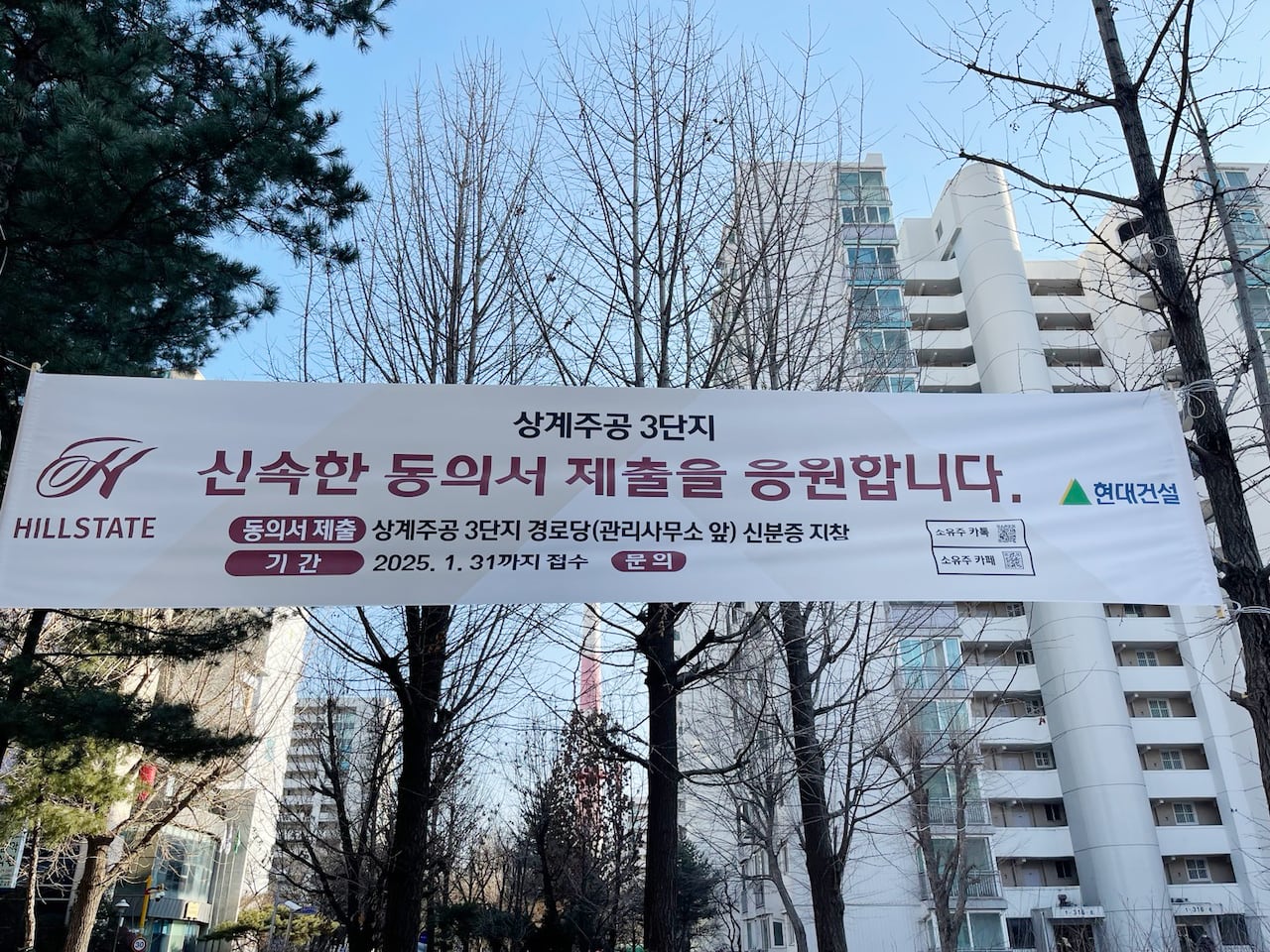Sanggaejugong Complex 3 in Sangye-dong, Nowon District, Seoul, is applying for rapid integration planning consultation from the Seoul City to establish a maintenance plan. The rapid integration planning consultation method is a kind of fast track that allows receiving expert advice designated by the city from the stage of establishing the maintenance plan. Through this system, the maintenance plan can be set, and the designation of the maintenance zone is possible.
Next month, plans are to apply for the rapid integration planning consultation from Seoul City and establish the maintenance plan. The city plans to increase the land-use area and raise the floor area ratio through reorganization of the district unit plan in the area where this complex is located. Sanggaejugong Complex 3, which is adjacent to Nowon Station on Seoul Subway Lines 4 and 7, is considered prime land in the area of Sangye-dong, where many aged apartments over 40 years old are clustered, and it is a large complex with over 2,000 apartments. The proximity of Sanggae High School to the complex is also an advantage.

According to the maintenance industry on the 26th, the owners of Sanggaejugong Complex 3 gathered consent forms (minimum consent rate of 30%) for applying for the rapid integration planning consultation project from the city. They are also in the process of finalizing the maintenance plan through a maintenance company. Once the maintenance plan is completed, they plan to apply for the rapid integration planning consultation from the city with this plan. A representative of Sanggaejugong Complex 3 said, “We plan to apply for the rapid integration planning consultation to Seoul City through Nowon District in March.”
Introduced in 2021, the rapid integration planning allows Seoul City to directly propose a plan at the maintenance plan establishment stage and quickly support the approval of future project implementation plans, shortening the usual maintenance zone designation period from about 5 years to 2 years. Rapid integration planning is divided into planning and consultation methods. The planning method is public-led, whereas the consultation method can omit the planning and design procedures of district unit plans or resident proposals and draft the maintenance plan by receiving advice from the city. A city official explained, “Rapid integration planning consultation simplifies the procedure for determining the maintenance plan, helping to achieve rapid reconstruction.”
Sanggaejugong Complex 3, completed in 1987, consists of 26 buildings, the tallest being 15 floors, with a total of 2,213 units, located at 730-2 Sangye-dong, Nowon District, Seoul. Currently, the floor area ratio is 178%, and it received a precise safety diagnosis confirmation (Grade E) for reconstruction from Nowon District in May 2023.
The area where Sanggaejugong Complex 3 is located is expected to see an increase in the floor area ratio through the elevation of land-use areas. This area is part of the “Sangye Phase 1 and 2 Development District” created in the early 2000s. The city plans to reorganize the district unit plan for this area. The city’s plan is to designate the current general residential area as a mixed maintenance area for reconstruction and raise it to a semi-residential area, allowing a floor area ratio of up to 400%. However, the announcement regarding the city’s decision on the reorganization of the district unit plan has not yet been made.
In the construction industry, there are many opinions that the location and floor area ratio are generally favorable, making the reconstruction’s business aspect positive. However, some opinions state that the low land share reduces the business viability of the reconstruction.
Park Won-gap, senior real estate expert at KB Kookmin Bank, noted, “Because it is close to Nowon Station and is one of the few low-rise large complexes left in Seoul, the business viability is relatively good” and added, “However, there might be concerns regarding the shared costs due to the recent surge in construction costs.” A representative of a construction company stated, “Considering it is a large complex with over 2,000 units and can benefit from the location at the station, along with its low floor area ratio of around 100%, large construction companies would likely be interested in building the complex.”
Kim Je-kyung, CEO of Tumi Real Estate Consulting, stated, “It will be difficult to secure profitability due to the low land share,” and warned, “Even if the city raises the land-use area, the increased contributed acceptance as a result may raise the burden on the owners.”